Dover's Pharos: England's Last Surviving Roman Lighthouse
Dover was the base for a fleet of Roman ships called the Classis Britannica which patrolled the English Channel. We know that it became a key port as evidence of a massive harbour wall has been found beneath the town near Market Square. A fort was built to protect this harbour. The Pharos (lighthouse) at Dover Castle was one of a pair. The second was built on the other side of Dover but only fragments of it survive. These two lighthouses, with the help of a third across the Channel at the fleet’s main base at Boulogne in France, helped guide ships safely into port.
The fort at Dover was abandoned by the Roman fleet early in the 3rd century. A second fort was built by AD c.270, to improve defences and communications around Britain’s coast.
-
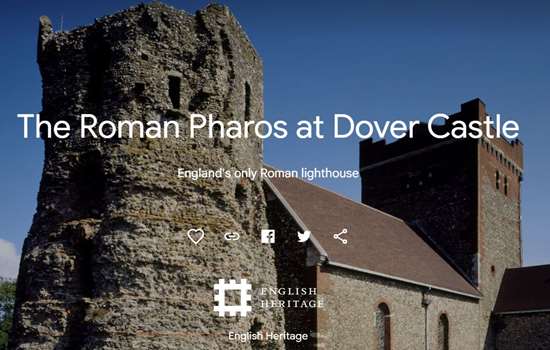
The Roman Pharos at Dover Castle - Google Arts and Culture Exhibition
Take a closer look at the Roman Pharos with our Google Arts and Culture exhibition exploring the building's story and location.
-
How did the Romans Change Britain?
Watch our short animation to find out more about how Roman rule impacted Britain.
-
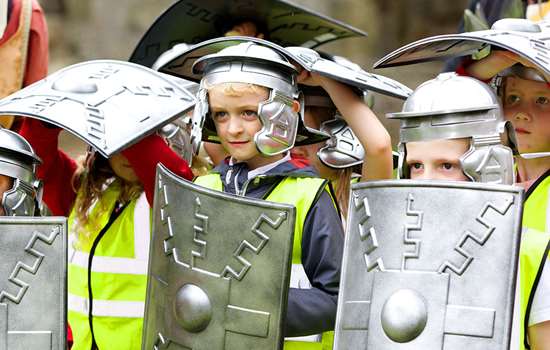
Teaching the Romans
Use historical information, learning activities and tips from our historians, curators and educational experts to support your Romans teaching.
-
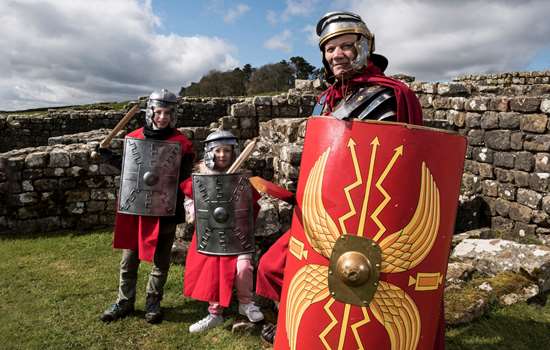
Story of England: Roman Britain
Discover the impact and legacy of Roman rule in Britain and explore other Roman sites in English Heritage's care.
Anglo-Saxons, William the Conqueror and the Norman Conquest
Dover remained an important port in the Saxon period, and a mint (place for making coins) was created there in the 10th century. The church of St Mary in Castro at the heart of Dover Castle is thought to have been built in the 10th or early 11th century. The large size of the church, and the discovery of a Saxon cemetery in the 1960s nearby, suggests that there was a community living on or near the hill. At the time of the Norman Conquest, there was probably a defensive enclosure (burh) on the hill, within Iron Age earthworks.
Following his success at the Battle of Hastings in 1066, William, Duke of Normandy (r.1066-87), took the town of Dover and burnt it. He then built fortifications on Castle Hill. We don’t know what these looked like but there was probably a timber castle within the Iron Age hillfort. It may have made use of the old earthwork defences and possibly defences around the burh.
By the mid 12th century, nine baronies (areas of land held by noblemen) had been created in the south east of England to help protect the important castle and port of Dover. These baronies provided soldiers and resources to maintain and defend the castle.
-
A Brief History of the Normans
Learn more about the origins of the Normans, the dispute between Harold Godwinson and William the Conqueror and how the Normans took control of England in this short animation.
-
Why William Won at the Battle of Hastings
Use our short animation to discover the main reasons why William the Conqueror won at the Battle of Hastings.
-

Teaching the Anglo-Saxons and Normans
Use historical information, learning activities and tips from our historians, curators and educational experts to help you explore the Anglo-Saxons and Normans with your learners.
-
1066 and all that: The events and people behind the Battle of Hastings
Find out more about the build up to the Battle of Hastings, who had the strongest claim to the throne and more with Curator of Collections Kathryn Bedford and Senior Properties Curator Roy Porter.
Henry II, Thomas Becket and a royal palace
Henry II (r.1154–89) ruled over a large empire in Europe during his lifetime. It included England, parts of Wales and Ireland, and over half of France right down to the Pyrenees mountains between France and Spain.
In 1162, the king appointed Thomas Becket as Archbishop of Canterbury. Henry wanted to bring churchmen under the Crown’s authority, but Becket resisted him and had to flee to the kingdom of France in 1165. He returned to England in 1170 but four knights from Henry’s household murdered him inside Canterbury Cathedral on 29 December 1170. Henry was widely blamed for ordering the killing.
During the 1170s, Henry’s wife, Eleanor of Aquitaine, and their sons, Henry and Richard, rebelled against him. They joined with Louis VII of France and William II of Scotland who tried to invade Henry’s lands in England and France. The King believed these attacks were God’s punishment for Becket’s murder and he punished himself in public to try to make amends.
In 1179, Louis arrived to pray at Becket’s shrine inside Canterbury Cathedral. The shrine was becoming a popular pilgrimage destination and Henry realised he needed an impressive place to welcome important visitors. In the 1180s, Henry developed Dover Castle, creating one of the most advanced fortifications in Europe. It was a palace-fortress where he, his household and important visitors could stay.
-
Homes Through History: Medieval Dover Castle
Meet King Henry II's Lord Steward at Dover Castle to find out more about what living in a medieval royal household was like.
-
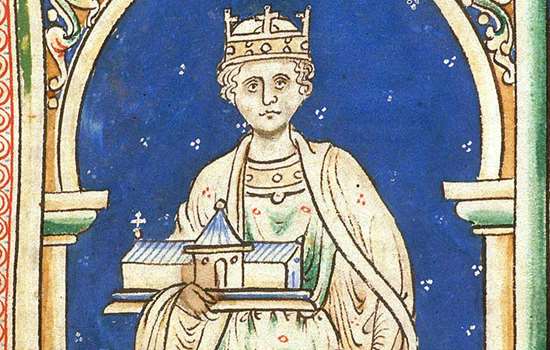
The Angevin Empire
Find out more about the vast empire that Henry II ruled over which stretched from Scotland to the Pyranees.
-
The Extraordinary Life and Times of Eleanor of Aquitaine
Join presenter Charles Rowe, Senior Properties Historian Steven Brindle and Professor Lindsay Grant from the University of Reading as they discuss Eleanor of Aquitaine, one of the wealthiest women in Europe during her lifetime, Queen of France and England, and an active player in government affairs.
-
English Heritage Podcast - Thomas Becket's Murder and Dover Castle's Great Tower
Find out more about the link between Thomas Becket's murder and the Great Tower at Dover Castle with presenter Charles Rowe and Senior Properties Historian Steven Brindle.
King John, The First Barons' War and Sieges at Dover
King John (r.1199–1216) inherited the throne from his brother Richard I (known as ‘the Lionheart’). King Philip II (known as ‘Augustus’) of France began expanding his territory by force. He defeated John and took many of his Angevin territories. Between 1205 and 1215 John created a royal fleet to strengthen his defences on the south coast of England and spent a lot of money on improving the defences at Dover Castle. By 1204, many of John’s lands in France had been lost to Philip II. His military and diplomatic attempts to win them back cost a lot of money which the king raised by taxing his subjects heavily and unfairly. English barons became increasingly angry with the King and civil war broke out in May 1215.
John was forced to negotiate when the barons seized London in 1215 and he agreed to rule fairly by terms set out in Magna Carta. This was a document signed at Runnymede on 19 June. The settlement was abandoned immediately with neither side trusting the other. Pope Innocent III supported the king and war began again between John and his barons.
By early 1216, the barons were not making progress in the war and it seemed that John was stronger. The barons hoped they could defeat John with help from France. They invited Prince Louis ‘the Lion’ (son of Philip II) of France to become King of England. John retreated when Louis arrived in Kent in May 1216 with a large army. Many towns and castles in south-east England greeted Louis positively and he was proclaimed king in St Paul’s Cathedral in London but not crowned. Dover Castle was held for King John by Hubert de Burgh, a garrison of 140 knights and many more soldiers. The castle resisted a siege in 1216 and another in 1217 after John’s death.
John's young son Henry III was crowned in October 1216. His loyal supporters gradually defeated Louis and the barons on land at Lincoln and in a great sea battle near Sandwich in Kent. The war came to an end, Henry III and the barons reached agreement and Louis returned to France.
-
How to Take a Medieval Castle
Watch our short animation to learn more about how to take a medieval castle.
-
The First Barons' War and the Great Siege of Dover Castle - English Heritage Podcast
Listen to this episode of the English Heritage Podcast to discover more about King John and Dover Castle's experience of the First Barons' War.
-

Teaching Medieval History
Use historical information, learning activities and tips from our historians, curators and educational experts to support your exploration of medieval history.
-
A 360 View of Dover Castle
Explore medieval Dover Castle with our 360 view and consider what it may have been like to be stationed inside its walls during a siege.
Eleanor De Montfort and the Second Barons' War
Eleanor de Montfort (1215 –75) was the daughter of King John and sister of Henry III. Her second husband, Simon de Montfort, became an influential figure in English politics with Eleanor’s support.
During the 1260s, a group of English barons believed Henry III was giving too much power to his foreign relatives. A war broke out between the king and his barons, known as the Second Barons’ War (1264–67).
By 1263, Simon de Montfort had become the barons’ leader. When Henry III and his son, Edward, were captured in 1264 at the Battle of Lewes, Simon effectively became ruler of England. Eleanor coordinated communications between her husband and her sons as they took over key areas of England. She also developed networks of important supporters like bishops.
When Prince Edward escaped in May 1265 and restarted the war, Eleanor moved to Dover Castle for greater security. From there, she could try to influence the powerful Cinque Ports (Sandwich, Dover, Hythe, New Romney and Hastings). After her husband and eldest son died at the Battle of Evesham on 4 August, Eleanor became a target.
A siege broke out at Dover Castle in October 1265. Fourteen royalist prisoners Eleanor was holding in the Great Tower convinced their guards to set them free and they attacked the castle from inside. In the end, Eleanor negotiated a deal - she would leave England for an abbey south of Paris and her supporters would be pardoned. Eleanor died in France in 1275.
-
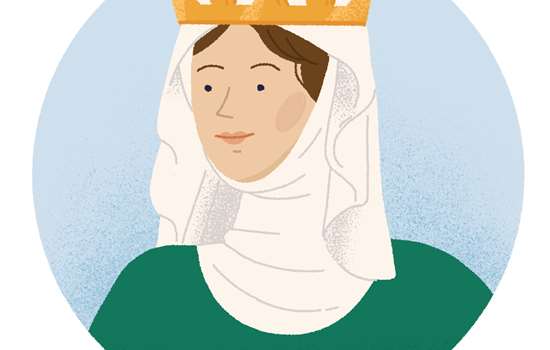
Eleanor De Montfort
Read more about Eleanor de Montfort, the sister of Henry III, wife of Simon de Montfort and a key player in English politics during the 1250s and 1260s.
-
Eleanor de Montfort at Dover Castle
Join presenter Charles Rowe and curator Kathryn Bedford as they explore Eleanor de Montfort's experience of being at Dover Castle during the siege of 1265 during the Second Barons' War.
-
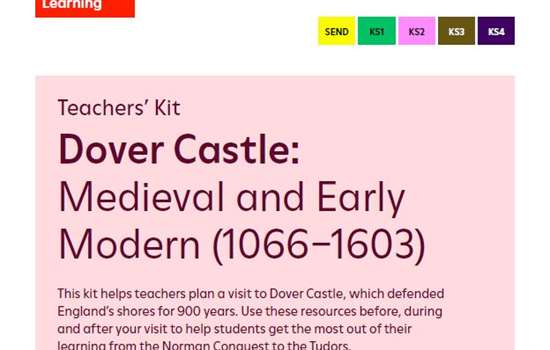
Dover Castle: Medieval and Early Modern Teachers' Kit (KS1-4)
Use the information and activities in this Teachers' Kit to explore the medieval story of Dover Castle, including the Second Barons' War.
-
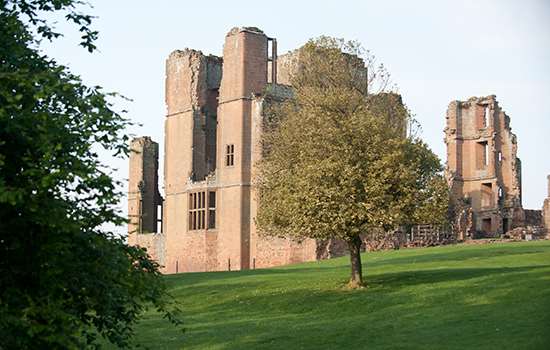
The Siege of Kenilworth Castle
Discover how the Second Barons’ War continued with one of the longest sieges in English history at Kenilworth Castle, fought between Henry III and Simon and Eleanor de Montfort’s son.
A Princess, Parliamentarians and Prisoners
In the 17th century, the castle saw its last royal visitor. In 1625, the French princess Henrietta Maria stayed at the castle on her way to marry Charles I (r.1625–49). She was not impressed with the accommodation, her entourage claiming that ‘the queen was rather badly housed’.
When the English Civil War broke out in 1642, the town of Dover sided with Parliament but the castle garrison remained loyal to the king. On 21 August 1642 armed Parliamentarians from the town surprised the garrison in the night and took the castle.
After the monarchy was restored in 1660, the castle was neglected and only a small garrison remained there. At some point in the late 17th century, the Great Tower was stripped of its furnishings and adapted to house French prisoners of war, who left fine carvings around the building that can be seen today.
-
Why did England have a civil war?
Watch our introductory video to find out why England had a civil war in the mid 17th century.
-
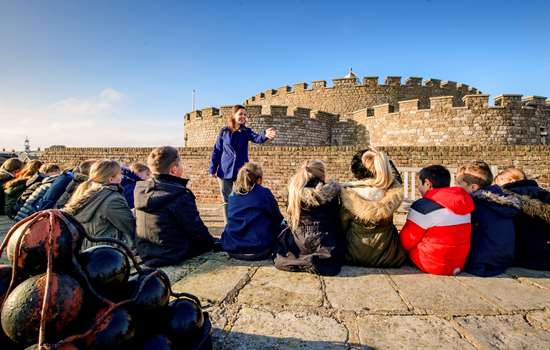
Teaching Tudors and Stuarts
This guide to teaching Tudors and Stuarts includes advice from our educational experts and historians as well as suggested activities to try with your students in the classroom or on a school trip.
-
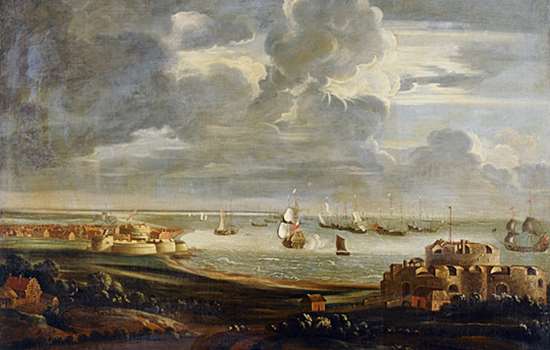
Maritime Decline and the Battle of the Downs
Discover what a sea battle off the Kent coast can reveal about the state of the English navy during the 1630s.
-
Ask the experts: Everything you want to know about the Civil Wars
Join presenter Charles Rowe, Senior Properties Curator Roy Porter and Senior Properties Historian Paul Pattison as they discuss the English Civil Wars.
Transformations and Tunnels
In 1744, France declared war on Britain during a much wider conflict known as the War of the Austrian Succession (1740–48). In 1745, those who supported Charles Edward Stuart’s claim to the English throne (Jacobites) launched a rebellion. They timed this when England was also under threat of French invasion. If the French landed in England, they needed a secure port and Dover was the clear option. The old medieval buildings of the inner bailey were converted into barracks for a larger garrison who could better defend the castle and the port of Dover.
During the French Revolutionary Wars (1792–1802) and Napoleonic Wars (1803–15), Dover was once again a target for French invasion. Prime Minister William Pitt’s government spent huge sums of money on the defences at the castle, and on the opposite hill known as the Western Heights. In the castle, this included several new barracks, including a system of new tunnels. These were excavated behind the cliff face and could house soldiers. The castle’s defences were transformed and modernised to mount larger and more powerful gun batteries to resist attack. They were also designed to withstand artillery bombardment. The work was planned and supervised by a military engineer, Lieutenant-Colonel William Twiss.
-
The Battle of Waterloo: A Timeline
Use this short video to better understand the timeline of events during the Battle of Waterloo.
-
Lord of War: Napoleon Bonaparte's Life and Legacy - English Heritage Podcast
Listen to this episode of the English Heritage Podcast to find out more about the life and legacy of Napoleon Bonaparte: soldier, First Consul and later Emperor of the French.
-
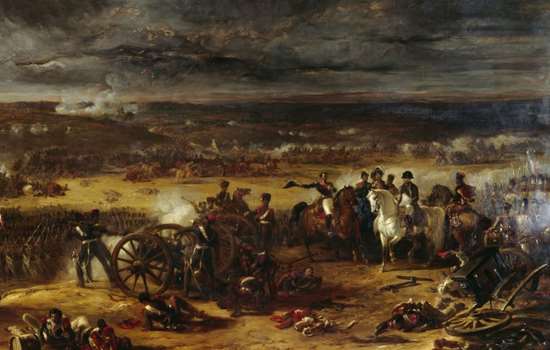
Georgians: War
Discover more about conflicts during the Georgian period and the nature of warfare in a time of imperial expansion.
-
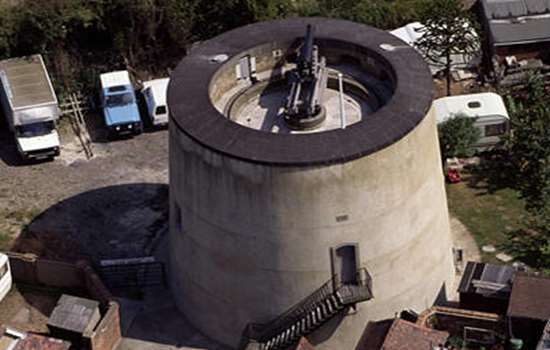
Dymchurch Martello Tower
Find out more about another type of Georgian defence developed the Napoloenic Wars to guard against the threat of French invasion.
The First World War and the Royal Navy's Dover Patrol
Dover Harbour became the home of the Royal Navy’s Dover Patrol when war broke out in August 1914. This naval command included a group of ships and aircraft which defended the Dover Strait against German ships, submarines and aeroplanes. It also protected army communications with France and Flanders (the northern part of Belgium).
The garrison of around 16,000 troops at Dover would defend the port in the event of an attack. The castle was its headquarters and defended a fortified areas on the high ground around the town. Within this perimeter, they had camps for soldiers completing their basic training before heading to the Western Front and other theatres of war.
Anti-aircraft guns were mounted near the Church of St Mary in Castro to defend against airships and aeroplanes. Coast defence guns defended the harbour approaches. Entry to the harbour was controlled by the Fire Command Post and Port War Signal Station.
-
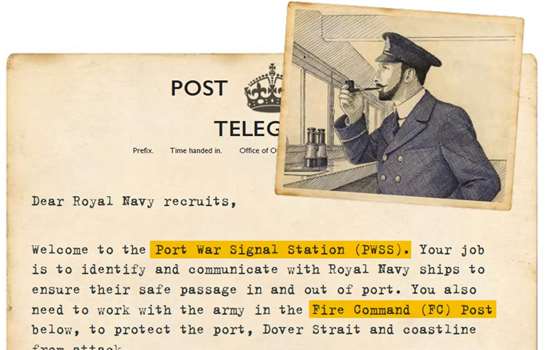
Dover Castle Team Training Assignment (KS3-KS4)
Delve into the world of wartime codes and symbols with this resource focused on the First World War at Dover Castle.
-
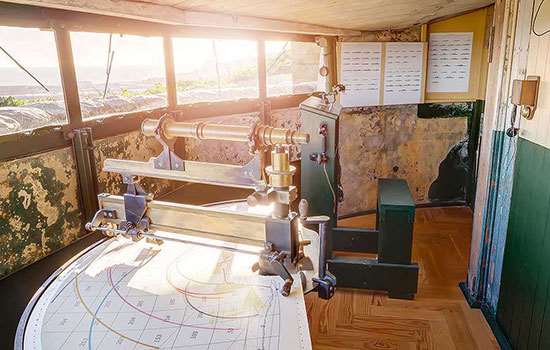
Fortress Dover and the First World War
Use our virtual tour of the Fire Command Post and Port War Signal Station at Dover Castle to explore the site's role during the First World War.
-
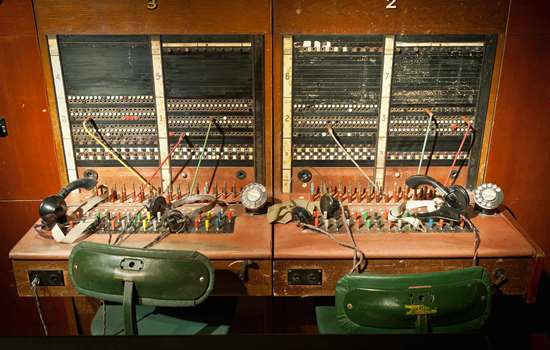
Wartime Tunnels Collection Highlights
Explore some of the key objects on display in the Secret Wartime Tunnels at Dover Castle.
-
Dover Castle: Recharged Battery
Discover Dover Castle's rare 3-inch anti-aircraft gun dating to the First World War and how it has been conserved and protected for the future.
Operation Dynamo: 'The Miracle of Dunkirk'
Dover Castle resumed to play a vital military role during the Second World War (1939-45), with an army garrison and a Royal Navy base. Empty underground casemates were used as bomb-proof headquarters and offices for coordinating naval operations, coast artillery defences, anti-aircraft defences and the defence of the fortress.
By the end of May 1940, most of the British Expeditionary Force (BEF) was trapped alongside French and Belgian soldiers, by the German army around the town of Dunkirk in northern France. Vice Admiral Bertram Ramsay of the Royal Navy directed a rescue mission codenamed Operation Dynamo from his headquarters at Dover Castle. Between 26 May and 4 June, Ramsay and his staff at Dover worked around the clock to coordinate Royal Navy warships, merchant vessels and small civilian boats. They succeeded in rescuing 338,226 British and Allied troops. This remains the largest amphibious evacuation ever to take place during wartime and is known as the ‘Miracle of Dunkirk’.
By June 1940, Dover was the nearest English town to enemy-occupied territory.
-
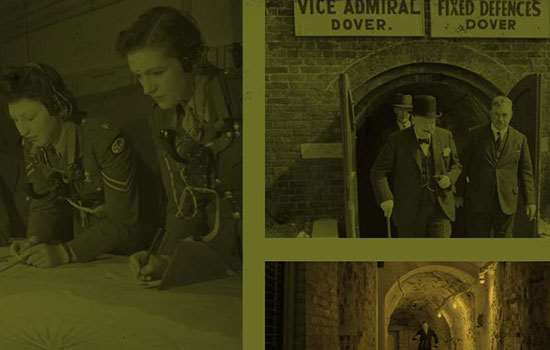
Learn Along With Us: Operation Dynamo
Use our online resources to find out more about Dover Castle's role in the Evacuation of Dunkirk (Operation Dynamo) in 1940.
-
Meet Admiral Ramsay
Join Admiral Ramsay at Dover Castle as he prepares for Operation Dynamo during the Second World War.
-
Dover Castle: Rescue from Dunkirk
Learn more about Dover Castle's role in Operation Dynamo with this short introductory video.
-
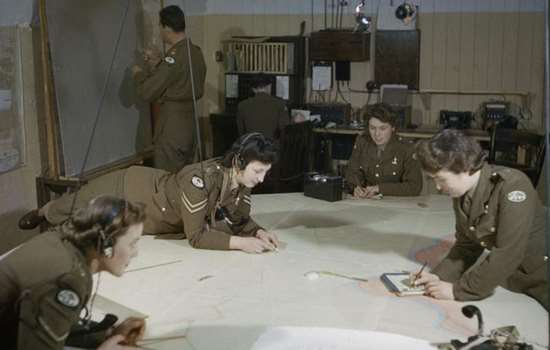
Operation Dynamo - Things You Need to Know
Find out more about the planning behind Operation Dynamo and discover how the operation unfolded between 26 May and 4 June 1940.
Operation Fortitude South and the D-Day Landings
The D-Day landings on 6 June 1944 marked the start of the campaign to liberate north-western Europe from Nazi occupation. It aimed to land almost 133,000 Allied troops in northern France and some preparations for the invasion involved staff at Dover Castle.
From July 1943, a secret operation was planned to mislead German forces about where and when the Allied invasion would happen. British codebreakers had cracked the Germans’ Enigma code so they could check how successful the misinformation campaign was becoming. The Allies also had double agents who could give the Germans false information about invasion plans.
Operation Fortitude South sought to convince the Germans that an Allied invasion would happen via the Pas-de-Calais; an area of northern France further to the north-east than the actual location of the landings. The Allies even invented a fictional army, the First United States Army Group (FUSAG). To keep up the pretence, fake landing craft, tanks and other vehicles were placed across the south-east of England. In spring 1944, British and Canadian units based at Dover Castle sent fake coded messages all over Britain to make it sound like FUSAG was preparing an invasion.
The operation was so successful that the Germans still believed FUSAG existed two months after the D-Day landings. They kept vital forces away from Normandy because they believed an invasion was due to take place in the Pas-de-Calais.
-
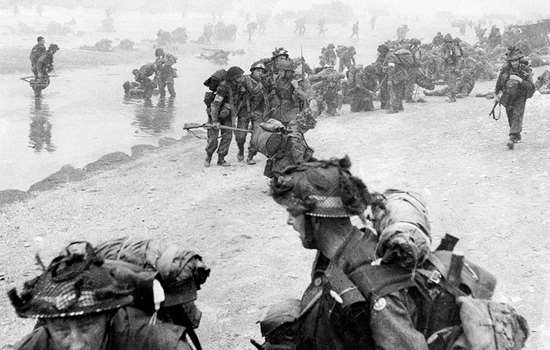
D-Day Deception
Discover more about the details behind Operation Fortitude South and its contribution to the success of the D-Day Landings in 1944.
-
English Heritage Podcast - The D-Day landings and Dover Castle
Join presenter Charles Rowe and Senior Properties Historian Paul Pattison as they discuss Dover Castle's role in the D-Day landings.
-
Postcard from Dover Castle
Take to the skies above Dover Castle to understand its position in the local landscape.
-
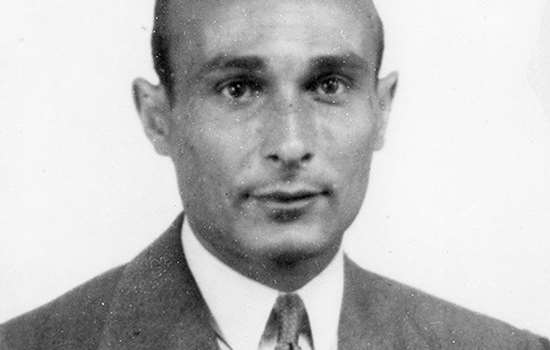
Blue Plaque: Juan Pujol Garcia ('Garbo')
Find out more about secret agent Juan Pujol Garcia (codenamed 'Garbo') and his role in the success of Operation Fortitude South.
The Cold War at Dover Castle
The Army left the castle in 1958 but Constable’s Gate remained a senior officer’s residence until 2015.
During the Cold War, nuclear attack was considered a serious threat to Britain and Dover Castle was prepared to be a Regional Seat of Government (RSG) in the early 1960s. This was one of 12 sites across the UK where a senior minister would take charge with a military and civilian staff in the event of an attack. It would be their job to organise some kind of administration system.
Dover's RSG was located on Dumpy, the deepest level in the underground tunnels. Annexe level was refitted as a dormitory and the western tunnels on Casemate level were repurposed as dormitories, dining and catering areas and rest rooms. An air filtration system was installed and the levels were sealed against contamination. There was also communications equipment set up in the tunnels, including a small TV broadcasting studio which could be used after an attack to send important messages out to the public.
The RSG at Dover Castle was never used for its intended purpose and was decommissioned in the early 1980s. Today Dumpy level is only accessible via special guided tours on selected days.
-
Dover Castle's Secret Cold War Tunnels - English Heritage Podcast
Join presenter Charles Rowe and Cold War expert Mark Bennett as they discuss Dover's Cold War history.
-

Dover Castle in the 20th Century Teachers' Kit (KS1-4)
Use the historical information, glossary, timeline and sources in this teachers' kit to find out more about Dover Castle in the 20th Century, including the Cold War.
-
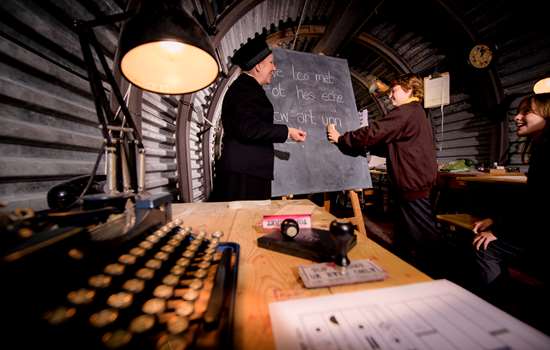
Teaching the 20th Century
Use historical information, learning activities and tips from our historians, curators and educational experts to support your teaching of 20th century history.
-
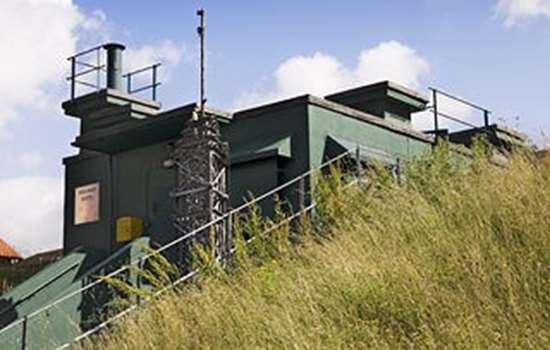
York Cold War Bunker
Find out more about Britain's preparations for nuclear attack during the Cold War with our short history of York Cold War Bunker.
